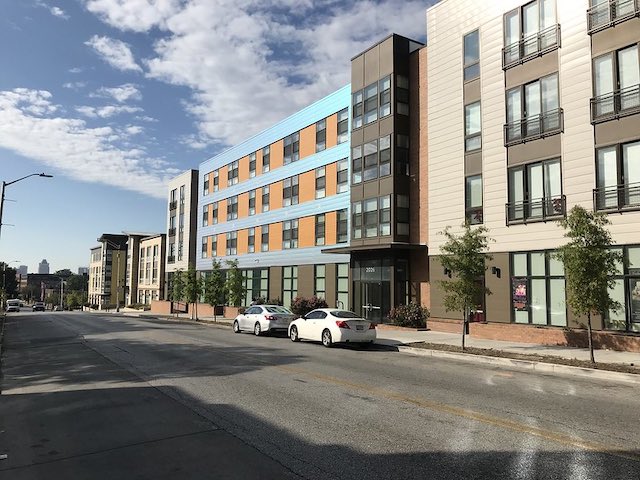The share of homes owned by their occupants grew from 64.1 percent in 2019 to 65.2 percent in 2022, according to data from the American Community Survey. The share of homes that were single-family increased slightly from 68.6 percent to 68.6 percent.
The share of people living in owner-occupied homes grew from 66.4 percent in 2019 to 68.4 percent in 2022, while the share of people living in single-family homes grew from 73.6 percent in 2019 to 74.2 percent in 2022.
The share of people living in single-family homes is larger than the share of households that own their own homes because family sizes are larger. The average number of people in a single-family home is 2.7, while the average in dupluxes to quadraplexes is 2.2 and the average in apartments of five units or more is only 1.9.
Before the pandemic, surveys showed that a large majority — around 80 percent — of Americans prefer or aspire to live in single-family homes. In fact, more than 80 percent of the residents of Delaware, Idaho, Indiana, Iowa, Kansas, Michigan, Minnesota, Missouri, Nebraska, Ohio, and Utah do live in single-family homes. More than 75 percent of the residents of 10 different states live in owner-occupied homes.
The pandemic has reinforced this preference. San Francisco, which has the lowest share of single-family homes of any major western city, also suffered one of the most drastic declines in population, going from 861,580 people in 2019 to 782,233 in 2022. Apartment residents were most likely to move out of the city, with the share of people living in single-family homes rising from 40.4 to 42.2 percent. The share of San Franciscans living in homes they or other household members own rose from 42.4 to 45.5 percent.
There is also a strong correlation between single-family homes and home ownership. About 85 percent of single-family homes are owned and more than 85 percent of multifamily dwellings are rented. Thus, land-use policies that make single-family homes more expensive also discourage homeownership.
In general, I believe that most Americans regard multifamily housing as temporary housing: a place to live for people who plan to remain in an area for only a short time or for people who are looking for a single-family home they can afford. Planners who regard multifamily housing as equivalent to single-family homes are deluding the public if not themselves.
These housing data are available from the Census Bureau web site. Enter one of the following table numbers in the search field:
• B25003 for owner or renter occupied*;
• B25018 for median number of rooms per dwelling unit;
• B25032 for household ownership by number of housing units*;
• B25033 for population by ownership and number of housing units;
• B25042 for owned/rented by number of bedrooms;
• B25044 for owned/rented by number of vehicles available;
• B25058 for median rents;
• B25077 for median home values;
• B19113 for median family incomes.
The tables marked with an asterisk can be broken down by the race of the main householder. Add an A to the end of the table number (e.g., B25003A) for white, B for black, C for Native American, D for Asian, E for Native Hawaiian, F for some other race, G for two or more races, H for non-Hispanic white, and I for Hispanic.
After entering the table number you want in the search field, choose the geographic area or areas (no limit) you want, then click on “View all 30 products” under Tables. For 2022 numbers, click on “2022: ACS 1-year Estimates Detailed Tables.” Download the data in Excel, CSV, or other format by clicking on “More tools” on the right. If you choose a lot of geographic areas, such as all cities and counties, the web site may report that there are too many data to display and ask if you want to download. This has never worked for me; instead, choose, “To proceed with the table display anyway, open the table” then choose Excel or CSV file under the “More tools” menu.








